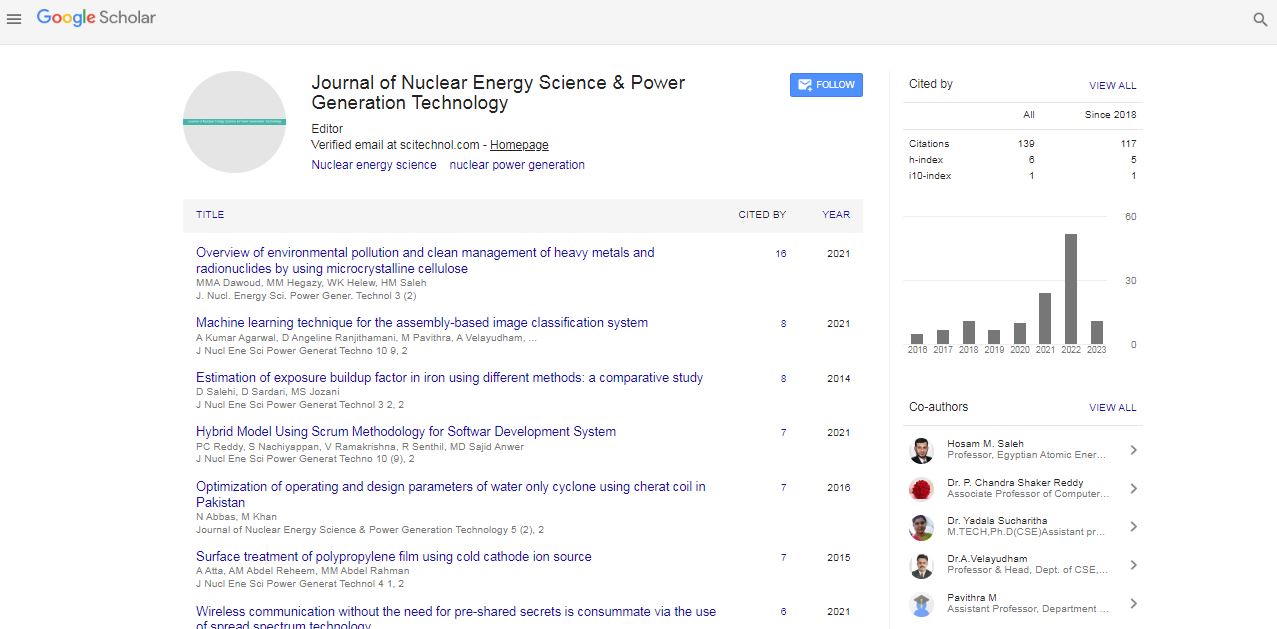Research Article, J Nucl Ene Sci Power Generat Technol Vol: 5 Issue: 3
Effect of Coolant Temperature on Core Power Behavior of a Miniature Neutron Source Reactor
| Anas MS1*, Ahmed YA2 and Rabi’u N3 | |
| 1CAAS Mando, Division of Agricultural Colleges, Ahmadu Bello University, Zaria, Nigeria | |
| 2Centre for Energy Research and Training, Ahmadu Bello University, Zaria, Nigeria | |
| 3Physics Department, Ahmadu Bello University, Zaria, Nigeria | |
| Corresponding author : Anas Muhammad Salisu
CAAS Mando, Division of Agricultural Colleges, Ahmadu Bello University, Zaria, Nigeria Tel: +234 8062883863 E-mail: abuumair399@gmail.com |
|
| Received: March 18, 2016 Accepted: April 26, 2016 Published: April 30, 2016 | |
| Citation: Anas MS, Ahmed YA, Rabi’u N (2016) Effect of Coolant Temperature on Core Power Behavior of a Miniature Neutron Source Reactor. J Nucl Ene Sci Power Generat Technol 5:3. doi:10.4172/2325-9809.1000154 |
Abstract
Published date: Investigation shows that reactor core performance largely depends on the power. It was in recognition of the role of this importance parameter that measurements were performed to verify the effect of temperature on core power of the Nigeria Research Reactor–1 (NIRR-1), which is Miniature Neutron Source Reactor (MNSR). Our results show that the core power for a preset neutron flux of 5.0×1011 cm-2s-1 shows a fluctuating behaviors and the values ranges from 14.85 kW to 15.09 kW with average excess reactivity of 3.07 mK and 2.99 mK respectively. The power coefficient off reactivity was also found to be (�?�0.113 mK/kW and �?�0.114 mK/kW) with an average coolant temperature difference of 12.2 °C. The results also indicate the need to obtain a correction factor for samples that will stay in the reactor for cyclic or longer period of irradiation provided there will be shutdown and start-up in-between the irradiations and also addition of beryllium shim to the reactor is necessary in order to compensate for the loss of core excess reactivity. Our results also revealed that there is a strong dependence of the reactor power on coolant temperature difference, which is in perfect agreement with the design of the MNSR and findings of many workers in the area. The computer program developed in this work for the determination of core power using moderator parameters will not only serve as a new source code for microcomputer control of the reactor peak power and flux distribution but will also make it possible for the microcomputer console to display real time core power level, thermal limitation of the reactor core, a tool that is lacking in MNSR design.


